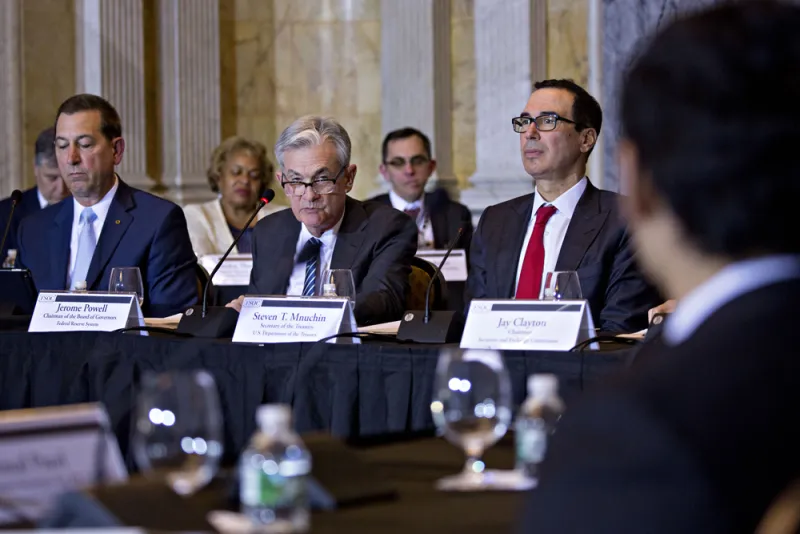Policy makers are sounding the alarm about alternative credit, raising concerns about the post-financial crisis shift in lending from banks to non-bank institutions, asset managers, and investment funds.
The warnings come as investors and managers are forecasting that the current credit cycle could be nearing its end.
So far there are no proposed rule changes. But yesterday the Financial Stability Oversight Council, part of the U.S. Treasury, issued a proposal for public comment on guidance on how non-bank financial companies can be given the designation of systemically important — which would make them subject to additional rules. As part of the proposed guidance, FSOC said it will review risk activities broadly, rather than purely focusing on non-bank lenders.
At the same time, the Financial Stability Board, a global financial watchdog, is reviewing the leveraged loan markets, particularly securitized collateralized loan obligations. The FSB wants to know what institutions are holding CLOs and the risks if investors withdraw their funds in a down market.
[II Deep Dive: How Dry Powder Could Blow Up Private Credit and Private Equity]
“Post-crisis, the banks were increasingly regulated, and as a result they exited a lot of the activity they used to do,” said Nathan Flanders, global head of non-bank financial institutions at Fitch Ratings. “That opened up a lot of space for non-bank institutions to fill.”
Now, non-bank institutions are becoming “a victim of their success,” Flanders said. “In aggregate, they’ve grown in size, although few individually are the size of the large banks. Regulators are asking if, in aggregate, there are systemic risks that could possibly emanate from non-banks that could have an impact on the system more broadly.”
One industry asset management executive familiar with the proposal said the growth of non-bank lenders because of stricter regulations is particularly notable in Europe, where banks have historically dominated. The capital markets have not been a source of funding for companies in Europe, unlike in the U.S.
“Companies have been forced to look for other sources of funding,” he added. “Companies still need capital.”
But the executive believes that the growth of non-bank lenders has increased the risk, especially at this stage in the credit cycle. “The knock-on effect of banks being subject to so much regulation is that then non-banks step in. Now lending standards are looser, and borrowers can dictate the terms of their loans.”
Fitch’s Flanders said that he sees two risks in particular. One is the risk that open-end funds that offer daily liquidity — but invest in less liquid securities — will be forced sellers in a down market as shareholders redeem. He explained that if insurance companies or banks are holders of these funds and they need to mark the securities to lower values, they could also be forced to sell to raise capital, pushing the market down further.
Flanders said the second risk is to banks that lend to the alternative credit firms.
“The bank may no longer be in subprime auto finance, say, but they may be providing bank facilities to an alternative credit firm that is,” he said. Flanders emphasized that banks are generally providing more senior secured debt, but “it’s still a second-order risk. The risks haven’t left, they’ve just moved to a less transparent, less regulated space.”







